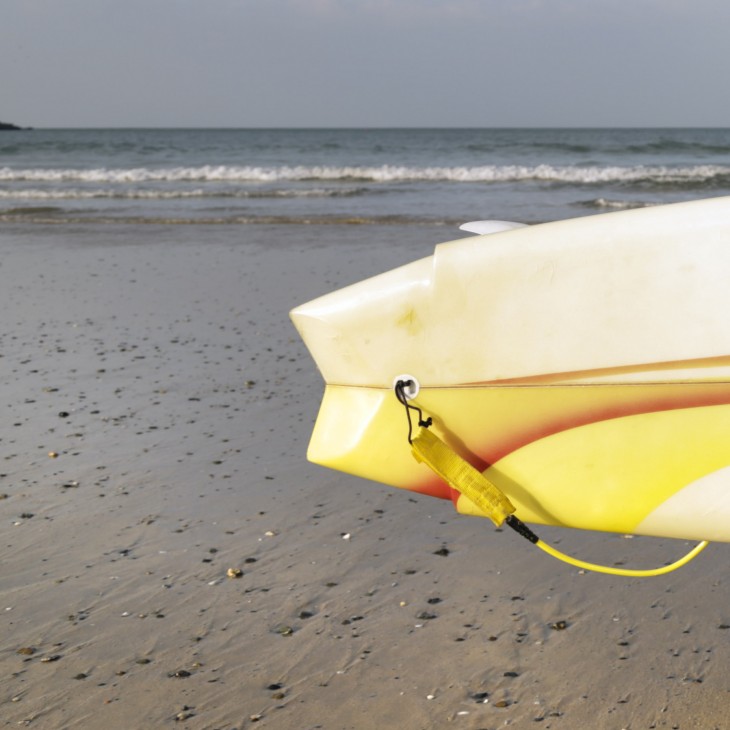Words and Images by Abbi Hughes

Having understood the lingo and names of different parts of the board, we decided to expand into more detail on tail shapes.
If you would like to know more about surfboard design and the best shape for you, then here is a little breakdown of some of the basics and how these varying tail shapes can affect your performance on the board, and the boards performance in the water.
There are many more variations on these specific shapes but, they are mainly based on these five fundamental designs.

Different shapes of tail will differ the surface area around the back of the board. This in turn, will effect its performance, speed in the water, buoyancy and control.
When looking at different shapes it helps to think of the tail in angular designs. For example, rounder shapes will give your turns rounder movements and smoother lines, tighter angles on the tail will create sharper turns in the water. Curves help the water flow around the board making it more stable, corners release water quickly allowing for a much snappier surfing style.

Square Tail
The square tail helps provide stability to your board. The sharp corners will help dig into the water to give you a sharp response in return, getting rid of water quickly so the tail is free to move once more. You will commonly see square tails on longboards.
Pin Tail
Water moves off the tail in loads of different angles leaving it a little slower to accelerate than the square tail. However, it has much better control as its digs in the water. Its the perfect shape for flying through the barrel! It has less surface area than any of the other shape, this allows it to sink into the surface water creating better stability when your surfing the wave. Its often used on big wave gun boards for this reason.
Round Tail
This tail is similar to the pin but holds more volume creating more lift in the water. It allows the water to wrap around creating better traction and a more relaxed flowing surfing style. The added surface area will provide more speed in slow sections, making it great for smaller waves or beginner surfers.
Squash Tail
This design is an adapted square tail and is one of the more common designs seen in boards today. It has the benefits of speed, connection to the wave and a quick release of water for manoeuvres. It creates added width for floatation/lift, maintaining speed through fat or flat sections. Its a great shape that can be used by many surfers of different abilities on different board types.
Swallow Tail
Swallow tails (or double pin tails) is the perfect blend of width and manoeuvrability. This design is similar to the pin tails which allows for increased hold in the water but the W shape creates stability and flow in and out of turns (digging each side of the swallow tail into the water through manoeuvres). The increased surface area allows the board to maintain speed through flat sections. This shape is often seen on fish boards and is ideal for those smaller summer swells.

So there we go…all you need to know about the basic tail shapes. So get out there and try them out. Feel the differences between shapes and how this works with your ability and board preference alongside your surfing style.
For more information on surfboard design see some of our other posts on www.surfgirlmag.com :




